#1932 Maria
Explore tagged Tumblr posts
Text

María Montez married William McFeeters and became Marie McFeeters, 1932.
In 1932, when Maria was 19 years old, she met the Irish banker William MacFeeters and they fell in love despite their age difference (he was nearly 50), they got married the 28th November 1932 when she was 20 in Barahona and lived there for a long time. In the house where they lived she was the perfect hostess as she prepared many good dishes which she served to her guests and which she then taught her mother to prepare. Maria and McFeeters’ house was very close to Maria’s parents’ house.

[María África Gracia Vidal & William MacFeeters wedding certificate, from FamilySearch.org]
One year later of her marriage to William McFeeters, María’s dad, Isidoro Gracia García suddenly passes away although Maria made big efforts to bring a doctor to her parents home. She lived near her mother one more year but by 1934 Maria and William McFeeters change their residence into San Pedro, a little village in Dominican Republic. There, they meet some friends of McFeeters who invited her to the United States. With her husband’s permission, she went and stayed for quite some time, under the name of Maria McFeeters, in fact she was looking for work and worked there for two or three months and returned to San Pedro. Then she went to Barahona where she told his mother that she wanted to divorce McFeeters. There were rumors that Maria wanted to separate because she wanted to go live in the USA but another reason was that he could not have children and she wanted to be a mother. They separated in 1940 but remained friends forever.
Photo and information from “De María África a María Montez, un mito en Technicolor” documentary directed by Jesús Reyes Mota, 2014.
#Maria Montez#María Montez#María África Gracia Vidal#Marie McFeeters#1932 Maria#William McFeeters#De María África a María Montez un mito en Technicolor#Jesús Reyes Mota#La Reina del Tecnicolor#The Queen of Technicolor#On this day#OTD
9 notes
·
View notes
Text
the most embarrassing thing a man can do is try to diminish the cultural, moral, and artistic significance of Jane Austen via the sophistry of an insecure ego
#jane austen#there are many such cases in multiple CENTURIES#maria and i speak on a critic who died in 1932 all the time#and then recently there was a substack post by a self-styled proponent for 'medieval life'
937 notes
·
View notes
Text

HAPPY PRIDE MONTH
As every year this is a good date to remember the daily struggle for the rights of the LBGT+ community. It is also a time to learn about the people who made it possible for us to identify ourselves as who we are today without fear of reprisals or being punished by the law. This month I got involved in the history of Argentina and its different movements for the fight for rights through the 20th century. Here I come to share some important figures, some more known than others, but obviously there are a lot that I have left out of this publication.

Sara Facio (1932-2024) & Maria Elena Walsh (1930-2011)
A couple of intellectual artists that would need a separate publication to go deeper into the subject. Sara is one of the greatest Latin American photographers who with her camera contributed to the creation of the most outstanding photographic heritage of the country. Maria Elena is a writer, singer and composer whose children's songs resonate to this day because they are much more profound than they seem and are still relevant today.
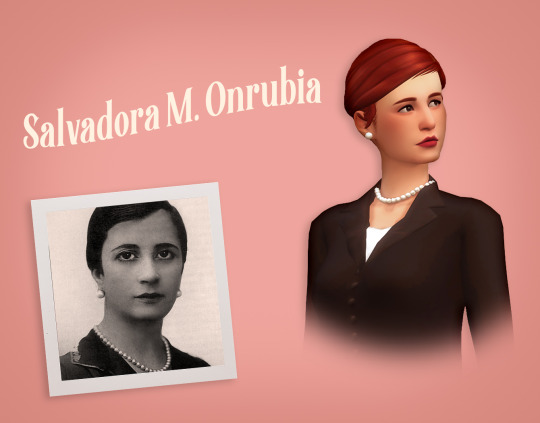
Salvadora Medina Onrubia (1894-1972)
She was a writer, militant anarchist, single mother and the first woman to run a newspaper in the country. She was the first Argentinean woman to dare to write about double sinners, lesbians and adulteresses. One of her most valued plays was Las descentradas, premiered in 1929. There, Salvadora honors her own contradictions, narrating women who question monogamous structures, marriage and the traditional family.

Malva Solis (1920-2015)
She was a transvestite writer who lived for 95 years when the life expectancy of this community in the country was under 40 years old. In 1951 founded the first trans organization on record, Maricas Unidas Argentinas. She has the oldest series of trans photographs in the country, dating from 1940 to 1980, when simply having those photographs at home was cause for being arrested. There is a documentary based on the photographs and conversations with her at her home called "Con Nombre de flor".
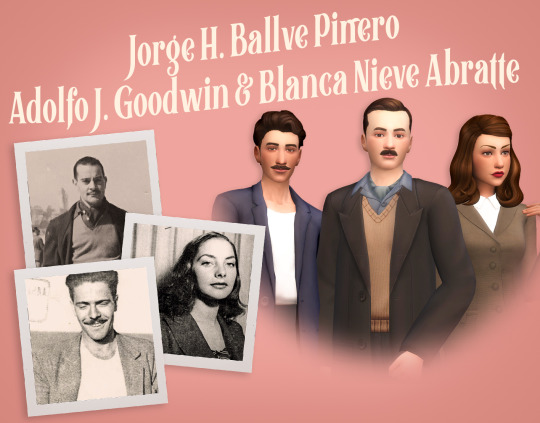
Jorge Horacio Ballve Piñero (1920-?)
Piñero was a young man from a well-to-do family of the Buenos Aires society at the beginning of the century. Together with his best friend Adolfo and Blanca, he organized gatherings in his apartment in Recoleta, and was a pioneer of male erotic photography. They mixed the privileged social class with workers, dishwashers, gas station workers, sailors and cadets from the Military College. These three characters were involved in a police case involving cadets from the military college, known as the Cadet Scandal. In the police archives remain captive the photographic collection, intended for pleasure and personal aesthetic enjoyment that tragically proved key to incriminate some friends who just wanted to have fun.

Ruth Mary Kelly (1925-1994)
She was a bisexual woman, who worked as a "Wohoo Worker". Founder of Grupo Safo in 1972, the first Argentine lesbian organization, and of the Frente de Liberaci��n Homosexual (Homosexual Liberation Front). In 1972 she wrote Memorial de los Infiernos about her experiences as a "Wohoo" worker and bisexual, persecuted by the psychiatric-prison system.

Manuel Puig (1932-1990)
He was an Argentine writer and LGBT+ activist, author of the novels Boquitas pintadas, El beso de la mujer araña (Considered one of the most recognized LGBT works in Latin America and one of the best works in Spanish of the 20th century) etc. He also fought against authoritarianism and machismo, and was one of the founders of the Homosexual Liberation Front in 1971, one of the first associations for the defense of LGBTQI+ rights.

Mariela Muñoz (1943-2017)
She was the first transsexual woman to be recognized by the state and given a female ID card on May 2, 1997. At the age of 16 she became independent, and it was then that she began caring for children, teenagers and single mothers. She cared for children who had been abandoned by their mothers, whom she loved and cared for. She raised, during her lifetime, 23 children and 30 grandchildren. In a dispute over the guardianship of 3 children in 1993, Argentina was confronted for the first time with the debate as to whether a transsexual person "could be a mother"

Carlos Jauregui (1957-1996) & Raul Soria
Carlos was a History professor and the founder of the Civil Association Gays for Civil Rights, organizer of the first Pride march in Buenos Aires and an essential figure for Argentine activism. In 1984, he broke with the schemes by appearing in the magazine Siete Días embracing the activist Raul Soria, a homosexual person assumed his sexuality in a public way for the first time. He believed that media visibility is fundamental for LGTB people. Leaving aside the fear and silence that other generations suffered for years. In 1985, Raul would present himself as the first gay candidate for congressman in the country.

Roberto Jauregui (1960-1994)
Brother of Carlos, was a journalist, actor and the first activist for the rights of people with HIV in the country. In 1989 he exposed the inequality in access to treatment at that time due to the price of medication. He played a central role in marches, actions, talks and interviews to demand human rights for people living with the virus. A well-known phrase of his is "Showing one's face is not easy in a society that discriminates, censures and separates".

Cris Miró (1965-1999)
Cris was the first visible trans people that appeared in the media and broke with the "transvestite" paradigm. A dental student, she got involved in the artistic underworld and later studied classical dance, musical comedy and acting. Her career was meteoric: the popularity of revue theater catapulted her to the small screen where she became a sought-after figure in the most popular programs. On June 23rd, a series about his life inspired by his biography was released, available on Prime Video.

Alejandro Vannelli (1948-) y Ernesto Larresse (1950-)
They were the first couple in the province of Buenos Aires to get legally married on July 30, 2010 after the Equal Marriage Law was passed. They met in 1976 because of a triple A bomb in the theater where Larresse was performing with Nacha Guevara, then he joined the cast of Vannelli. At the beginning they did not like each other because of Vanelli's appearance as a wealthy young man and Larresse was the opposite, but opposites attracted and they were a couple for 34 years.

Norma Castillo (1943-) y Ramona "Cachita" Arévalo (1943-2018)
They were the of South America's first gay marriage on April 9, 2010. Norma and Ramona were married to two Colombians, who were cousins to each other. During the dictatorship they both went into exile in Colombia and there they fell in love and lived their romance clandestinely, until Cachita separated and Norma was widowed by her husband. They lived their love freely and even opened an LGBT discotheque in Colombia. In 1998 they returned to Argentina and began to work in sexual diversity organizations.
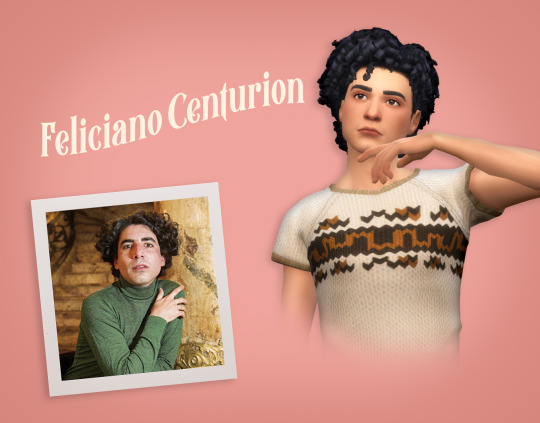
Feliciano Centurión 1962-1996)
He was a visual artist, a Paraguayan painter professionally trained in Argentina. He grew up in a home dominated by women, where he learned to sew and crochet. Inspired by queer aesthetics and folk art, he used to incorporate household textiles and references to the natural world. She handled kitsch art and languages not considered high art with a great deal of knowledge and sensitivity.

Humberto Tortonese (1964-) , Alejandro Urdapilleta (1954-2013) & Batato Barea (1961-1991)
Batato was an actor and "literary transvestite clown" as he called himself, one of the most important personalities of the underground theater movement of the post-dictatorship years. Together with Alejandro Urdapilleta and Humberto Tortonese, revolutionized the underground scene of the 80's - in places like the Parakultural. They disguised themselves, wore make-up and improvised delirious and strident scenes for the decade.

Sandra Mihanovich & Celeste Carballo
Sandra and Celeste are two singers who were visibly lesbians during the 80s and early 90s. Together they released the albums "Somos mucho mas que dos" and "Mujer contra mujer" which became a symbol of belonging for the whole LGBTQ arc in our country. They managed to be part of the rock scene, an area historically dominated by men. Sandra among all her songs is "Soy lo que soy" released in 1984 composed by Henry Jerman.
#Argentina LBGT#Lgbt Latin America#ARG Queer#lgbt#lgbt love#gay pride#bisexual pride#lesbian pride#pride month#the sims 4#sims 4 pride#sims 4 edit#sims 4 render#ts4 lgbt#lgbt history#queer history#victorian lgbt#PrideFlagLegacy#pride flag legacy challenge#ts4 historical#sims 4 historical#Cris Miro#Sandra Mihanovich#Celeste Carballo#Maria Elena Walsh#Sara Facio#Ballve Piñero#Carlos Jauregui#Roberto Jauregui#Feliciano Centurión
303 notes
·
View notes
Text
An analysis of Bianca di Angelo's role in the narrative and why bad writing can screw over a character.
For someone with such a limited time in the narrative, Bianca is one of the most divisive characters in the fandom. I've been in the fandom long enough to see how much nuance the fandom lacks when discussing certain characters and Bianca is no difference. But it's more than just viewing the characters' actions in a vacuum. It's ignoring the larger narrative problems. At the end of the day Bianca suffers from one simple problem: she's barely a character outside of her role in Nico's narrative. Like it or not, her entire character exists to die and give Nico issues down the road but Riordan's writing decisions didn't do her any favours either.
I feel like this is a huge issue when it comes to the pjo fandom they often try to come up with Watsonian solutions to problems that are Doylist in nature and Bianca is one example of that.
Case in point: Riordan's shit math when it comes to the Di Angelo siblings and how it messes up with bianca's character.
So when we meet them they're 10 and 12. We learn that their memories of their past is kinda hazy and that they don't remember their parents but that they were in a boarding school, then they moved to the lotus hotel, then they were taken out of the hotel and put into Westover's. And at the end we learn that they're Hades's children born before the oath of the big 3.
Said oath happened after WW2 btw. So 1945 probably since Bianca remembers FDR's presidency.
Now in TLO we get an update on this backstory. Hades is speaking to Maria about moving his children to the underworld or the lotus hotel since Maria doesn't like the former option because the war has put Hades in a bad situation with his brothers and also the prophecy is out, the oath has been taken and they're running out of time to hide the kids. So logic says that it's 1945. And then Zeus immediately kills Maria and Hades tells Alecto to erase the children's memories and put them in the lotus hotel, and honestly? I like this version much better? Because why in the world would Hades Put his children in a boarding school for a few years and THEN hide them in the hotel after they were nearly assassinated? Why not immediately put them in the hotel?
And so we get to our main dilemma. Bianca having to raise Nico. This was already strange to me because it's not as if this is a Jason and Thalia situation where Jason was a toddler and Thalia had to take care of him. Nico is not a baby they have a two year age difference. But of course these kinds of things might matter more if you're young. Even then, in what situation would Bianca be Nico's main caretaker? They were put into a magic hotel that mind you, makes time go faster so for them it was a month or two at best and they would have been given whatever they needed by the staff? Same type of issue with Westover's and the boarding school if you want consider that canon. They would have been taken care of by the facility. They probably wouldn't even have shared classes or dorms? Or am I misunderstanding American boarding schools?
And then, Riordan's bad math strikes again and this time with the characters' ages. Because Nico's age in HoO becomes 14 which would have made him 11/almost 12 in TTC but that's not the big problem, no no no. The problem comes from his official birthday which is 1932.
1932... Which would have made him 13 and Bianca 15 by the time Maria dies. Which is hilarious because with the way the kids are written during her death scene as absolute non players with nary a reaction, you would think they were written to be toddlers who didn't understand anything that was going on.
That royally screws over Bianca as a character (and me as someone who's trying to write a story centered around her). Because her main thing. The one time she's allowed to have complexity is the moment where she talks about how she wants to be more than Nico's caretaker, and she's barely Nico's caretaker at all. The best in universe explanation I can come up for this is that this is how Bianca perceives things because that's all that she literally remembers. Those months in the hotel and Westovers.
Another time the plot kinda messes her up is at the beginning of TTC. One complaint that I often see in regards to her Is how quickly she makes her decision. She does not even hesitate. She does not even wait to see the camp. You know the place that would have taken care of her and Nico which would have meant she wasn't going to be his supposed primary caretaker anymore? She doesn't even wait to see if it was an actual good place for her brother? Spoiler alert: it's not camp half-blood at the time was not a good place for either of them really. Nico did not have a cabin at camp and people were not accepting of him. Hell, people not being accepting of hades and his children was something established since the first book.
But once again, this is a Doylist problem at its core. We need to turn Bianca into a hunter but we also need Artemis to leave so that she can be kidnapped for the main conflict, so she leaves before the hunters even reach camp. Half-blood. So Bianca as a character doesn't even get to make a proper choice between the camp and the hunters. To people who only look at characters on an in universe level, it comes off as very rash and not well thought out.
To be fair, on an in universe level, she's a kid so it's okay if she's stupid, but Riordan wasn't trying to make her come off as that way? He treats Bianca's decision as a legit serious choice and not the rash decision of a desperate child.
And once again, Bianca is here for Nico's sake more than anything. She needs to die. So she takes the statue for Nico. Which is so ironic and tragic if you decide to play it that way. That Bianca wanted to be more than Nico's sister, but her literal death revolves around being his sister. Normally I'd enjoy this level of angsty irony but unfortunately that's how the very narrative treats her as well. Even her post mortem decisions are there to maximize Nico's angst more than that they're there to say anything about Bianca herself. We need Bianca to only appear at the end of Botl so that Nico and Percy can have a conflict but it once again comes at the cost of Bianca herself coming off as callous. What's the in universe reason for this behavior? It's so stupid because in universe, Nico doesn't even take that much convincing? One conversation. One conversation and Nico was convinced to stop his efforts in reviving her. Does she just not know her brother enough? Maybe since they technically know each other for a year max. Does she genuinely think she's that easy to give up on? Is she that conflict avoidant? I actually like this interpretation and plan to use it. There's much to be done with a character who's rash and bold but an absolute emotional coward who'd try to avoid an emotionally charged conversation until they absolutely can't.
Hell even after Botl, it's the same song and dance. Hades makes an absolute vile remark at Nico's expense. TSATS makes it into a joke moment and has you believe that Hades simple said that Bianca would have been a better demigod. No ladies and gentlemen. Hades literally tells Nico that he wished Bianca had survived instead.(The fact that I still think that hades is the best godly parent just shows you how low the bar is more than anything.)
I swear to God I spent so much time racking my brain trying to understand what this could mean for Bianca's character.

This is how I basically look like trying to milk every scene where Bianca is there as a character or is mentioned for every drop of characterization.
At the end of the day, I can't blame most of the fandom for being ambivalent towards her at best. The story by design is about Nico. It's designed for you to sympathize with him and yeah if I'm to look at it from Nico's perspective. He DID get abandoned, regardless of Bianca's intentions. From his Perspective , which is the one most people would take, his sister took the very first chance she could to ditch him for people she barely knew hoping people either of them barely knew would take care of him even though they haven't even seen the place yet, and then ignored him for months while he was desperate for a single conversation with her. Honestly had Nico outright resented his sister for leaving, I think the reaction towards her would have even been worse.
(Another sidenote, my very hot tea Is that I like to believe that had Bianca lived her and Nico's relationship would have become worse as time went on and as the camp's anti hades sentiments really started taking their toll on Nico. But I'm just an angst lover)
Worse is that this story is told from Percy's perspective and these two only have like 3 actual conversations together. One of them is her dying, one is about her making her first main decision and that's at the expense of Nico who's probably the fandom favorite behind Percy and Annabeth and the other is her trying to explain her aforementioned decision to Percy and even then, she talks about it in such broad strokes. "I want to be more than X" tells us about who you one day wish to be not about who you are at the current moment. And even when we have Nico as a POV character, Bianca is only there for "dead family member" trope. There's barely any moment where Nico remembers anything important about her to give her any depth. The cards are just stacked against her. Even the people who are at the "Bianca did nothing wrong camp" are barely interested in her. I swear to god whenever an AU comes up where she's alive, the focus is STILL on Nico. Oh Nico would have been such a happy person had she lived! And Bianca? Uhhhhh she would have fucked off with the hunters I guess?
Can we talk about the hunters while we're here?
If we WERE to talk about in universe scapegoats, I'd honestly choose the hunters. Honestly I could make a separate post about how much I hate how Riordan handled them. But oh dear God the way they're presented just comes off as creepy. The way they initially (up until TOA) only go for young girls because apparently older girls aren't useful once they hit puberty and start developing feelings for people and lose themselves(TTC and Percy Jackson's Greek gods oh dear lord are they terrible in Percy Jackson's Greek gods). How they're basically the heroine dumping ground for when Riordan doesn't know what to do with a female character. How ultimately in universe, Zoe more than anyone is to blame to for Bianca's death by taking an untrained girl to a mission where she KNOWS two people would die at the very least. And she doesn't even watch her properly during the mission. Honestly I could barely feel anything about Zoe's death upon rereads as an adult for this very reason. Or how stupid it is to basically put a child in front of a candy store and expect them to make a responsible decision. Who in their right mind would have young girls as young as nine take a celibacy vow? Oh but you'll be safe with us (never mind that we're not just normal hunters here like the actual myths but actual monster hunters) and you'll totally be able to see your brother when you want (actually we barely visit camp half-blood) oh but you'll be a FAMILY with us! Except you know if you catch feelings or get assaulted(holy hell how Riordan depicts the myth of Callisto makes me want to tear my hair out of my scalp)
#pjo#percy jackson#nico di angelo#bianca di angelo#artemis#pjo artemis#artemis pjo#bianca pjo#pjo Bianca#percy jackson and the olympians#percy jackson and the titans curse#pjo hoo toa#the hunters of artemis#pjo meta#rr crit#rr critical#anti rr#anti rick riordan#rick riordan critical#riordanverse#pjoverse
233 notes
·
View notes
Text

left: Maria Tarkovskaya, Andrei Tarkovsky’s mother, 1932
right: Margarita Terekhova in Tarkovsky's "Zerkalo"
149 notes
·
View notes
Text

THURSDAY HERO: Glagolev Family
It is undeniable that the role of Ukraine in the Holocaust was shameful. Almost a million Jews were killed by Ukrainian Nazi collaborators, most of them shot and dumped into mass graves, many while still alive. Because of this ugly history, and at a time when the Ukraine itself is under threat, it is crucial to remember those Ukrainians who did the right thing, even at great risk to themselves.
Alexei Glagolev was a Ukrainian Orthodox priest who practiced his Christian faith despite severe persecution from the Soviet communists. Together with his wife Tatiana and their children, Alexei hid Jews during World War II, a heroic act that almost cost the Glagolevs their own lives.
Born in Kiev in 1901, Alexei was raised in a devout Eastern Orthodox home. His father Alexander was a priest and professor at Kiev Theological Academy and known to be an ally to Jews at a time of rampant antisemitism. Alexei, a stand-out student in high school, enrolled in the Theological Academy in 1919, and studied there until 1923, even after it was shut down by the Bolsheviks and the students had to study in secret. Alexei married Tatiana Bulashevich, the daughter of a sugar plant owner, in 1926. They had three children, Magdalina, Nikolei and Maria.
In 1932 the Glagolevs’ world was rocked when Alexei was arrested by the communists for “anti-revolutionary acts.” He was freed after a week in custody, but was designated a “cult leader” and deprived of civil liberties. With his professional options severely curtailed due to his status as leader of a cult (the Soviets considered all religions to be cults), he labored as a construction worker and security guard. From 1936 to 1940 he studied Physics and Mathematics at the Kiev Pedagogy Institute, while secretly running an underground church. After the war in Eastern Europe began, Alexei was ordained as a priest and served in the Pokrov Church in Kiev.
In October, 1941, Alexei’s sister-in-law asked him to help her brother’s Jewish wife, Izabella Mirkina, who was in imminent danger of being murdered by the Nazis. Without hesitation, Alexei and Tatiana determined to do whatever they could to help persecuted Jews, despite caring for their own three children in difficult wartime conditions. Tatiana gave Izabella her own identity card and baptism certificate. In his memoirs, Father Alexei wrote, “My wife almost paid with her own life for her reckless action. The Gestapo was going from flat to flat asking for papers, and when they found out that Tatiana didn’t have a passport, they were going to arrest her. Very few people returned to their homes after such arrests. We begged and managed to persuade them to leave her alone after a few witnesses confirmed her identity.”
Even with Tatiana’s papers Izabella was unable to escape and returned to the Glagolevs in desperate need of a place to hide. Alexei later said, “Tormented, we searched for a way to save her. What kind of Christians would we be if we refused this poor woman, who was reaching out to us and pleading for help?” The Glagolevs welcomed Izabella and her daughter Irina into their own modest home. When other desperate Jews approached for help, Alexei gave them fake baptism certificates and hid them in his church, even though hiding Jews was a capital crime punishable by execution. The Glagolev children also helped care for the Jews and keep them safe and fed.
In 1943 Alexei moved out of his home and into the hospital at Pokrov Monastery, where he lived beside the Jews he was helping. This was very risky because the Germans had forbidden Ukrainians to live in that part of Kiev. He and his son Nikolei were arrested in fall of that year and deported to Germany, where Alexei was brutally beaten by the Nazis. Somehow they managed to escape and returned to Ukraine after the liberation from Germany in 1944. In 1945, Alexei wrote a letter to Nikita Khrushchev, Secretary of the Ukraine, about the Jews he had saved.
Alexei continued working as a priest in the Pokrov church until it closed in 1960. He worked in several other churches despite increasing ill health caused by his brutal treatment while imprisoned by the Nazis. Alexei died in 1972. Journalist Sergei Kokurin wrote in an article about Alexei, “It is hard to understand to an average man the determination with which Glagolev went against the tide. In 1936 this fragile-looking intellectual publicly carried the cross taken off the Church of Nikola the Kind, and despite threats from the communists kept it in his flat. He was the only priest in Kiev who refused in April 1942 to hold a church service to celebrate Hitler’s birthday.”
Alexei, Tatiana and their children were recognized as Righteous Among the Nations by Israeli Holocaust Museum Yad Vashem in 1991. In January 2002, to commemorate the 100th anniversary of Alexei Glagolev’s birth, a memorial plaque to him and his brave father Alexander was erected on the wall of the National University of Kiev.
For their heroic actions saving Jews, and for practicing their faith in defiance of Soviet persecution, we honor the Glagolev family as this week’s Thursday Heroes.
148 notes
·
View notes
Text
coming out of my well to shame the fandom re: treating Nico like he's from 1840 rather than 1940 in terms of living with medical innovations
Vaccines for the following diseases were available during this time:
Smallpox- first generation vaccines were available and work on second generation vaccines occured in the 1930s with production of an egg-based vaccine begun by the Texas Department of Health in 1939. DC schools required smallpox vaccination for children to be allowed to attend by 1930, so Nico would have gotten immunized for this even if he didn't get anything else.
Diphtheria- first vaccine was developed in 1913, then a cheaper version in 1924. Yep, it's the "antitoxin" they call for in Balto (1995)- it can be used to either treat active infection or immunize.
Pertussis (whooping cough)- first vaccine was licensed in the US in 1914, then another in 1931, and another that became the basis for the modern vaccine in 1932.
BCG vaccine for Tuberculosis (TB)- first available in 1921, but neither the US nor Italy mandated it. This vaccine is still given around the world today.
Tetanus ("lockjaw") - first vaccine was produced in 1924, then a more effective version in 1938. The combo DTP (diphtheria, pertussis, tetanus) vaccine was first released in 1948 and was used all the way up to 1996 when a new, safer version was released.
Anthrax- the veterinary vaccine in use today is based on the one developed in 1935 in South Africa. The Soviet Union developed a human vaccine that was available beginning in 1940.
Yellow fever- the vaccine still in use today (17D strain) debuted in 1939.
The first rabies vaccine was developed in 1885, for crying out loud!
Penicillin was used to cure infections as early as 1930, though it didn't hit mass-production until 1945. Other antibiotics (Salvarsan and Prontosil) were in use in the early 1900s (by 1910 and 1935, respectively).
Thyroxin (1914) and insulin (1923) were known quantities for treating endocrine disorders.
Medical radiography (x-rays) was a thing before 1900. There were portable ECG/EKG machines as early as 1927.
Cocaine was taken out of Coke in 1903. Like, not even Maria di Angelo would remember that.
Yes, a whole bunch of things changed in medical science between 1942 and the mid-2000s- plenty of fodder for "Will blows Nico's mind with modern medicine." I will even provide suggestions!
Vaccines for major childhood illnesses: polio (1952), measles (1962), mumps (1967), rubella (1969). IMO the polio thing is way slept on given how big the March of Dimes got in the public consciousness.
Closed-chest defibrillation (1950s) and CPR (1970s for the public)
Organ transplants (1953)
Ultrasound (1949/1961)
Not giving aspirin to anyone under 16 due to Reye's Syndrome risk (1980s) and the advent of other OTC painkillers (ibuprofen, 1969; paracetamol/acetaminophen, 1952; naproxen, 1976)
Insulin that comes from genetically engineered E. coli instead of purified animal pancreases (1978) so as to keep allergic reactions from happening
Rapid strep or flu tests (1980s/1990s) rather than waiting days to culture stuff
If y'all want a "they took the cocaine out of Coke" moment, might I suggest "what do you mean cigarettes/asbestos give you cancer" and/or "they took the lead out of the gasoline"?
But yeah...we've made a lot of progress since 1942 but it wasn't "you got ghosts in your blood and bad air do some drugs about it" back then- not by a long shot.
Wah wahwah wah wah back in my day we scoured Wikipedia and the rest of the internet to do background research on fandom-related minutiae and we liked it
#Nico di Angelo#fandom wank#Will Solace#rrverse#solangelo#pjo hoo toa#sorry this is just one of my pet peeves#forgive my bitching
103 notes
·
View notes
Text
















"YOU WERE MY LIFE." // BORA AND WOONHO
PROJECT 7 Time After Time // 20세기 소녀 20th Century Girl (2022) dir. Bang Woo-ri // wave to earth bad // 20세기 소녀 20th Century Girl (2022) dir. Bang Woo-ri // Anaïs Nin Henry And June: From "A Journal of Love" - The Unexpurgated Diary of Anais Nin (1931-1932) // 20세기 소녀 20th Century Girl (2022) dir. Bang Woo-ri // Foo Fighters Aurora // 20세기 소녀 20th Century Girl (2022) dir. Bang Woo-ri // Dulce Maria Loynaz Poema LVII (tr. James O'Connor) // 20세기 소녀 20th Century Girl (2022) dir. Bang Woo-ri // Silas Denver Melvin pitiful origin // 20세기 소녀 20th Century Girl (2022) dir. Bang Woo-ri // Robert Frost Nothing Gold Can Stay // 20세기 소녀 20th Century Girl (2022) dir. Bang Woo-ri // boygenius We're In Love // 20세기 소녀 20th Century Girl (2022) dir. Bang Woo-ri
#20th century girl#on love#on heartbreak#on grief#poetry parallels#poetry compilation#web weave#web weaving#na bora#kim yoo jung#poong woonho#byeon woo seok#poem#words#spilled poetry#spilled thoughts#writing#spilled ink#dark academia#dark academia poetry#poetry#dark academia quote#project 7#bang woori#wave to earth#anais nin#foo fighters#dulce maria loynaz#silas denver melvin#robert frost
86 notes
·
View notes
Text
Romanov myths part three - did the Grand Duchesses go shopping?
Over the years, a prevalent belief that the Romanov Grand Duchesses, Olga, Tatiana, Maria, and Anastasia, did not go shopping continues to be repeated. Some historians have even suggested that the girls did not know how paying for items worked. However, primary sources from people who knew the girls, were members of their entourage, and the Grand Duchesses' own diaries, tell a different story...
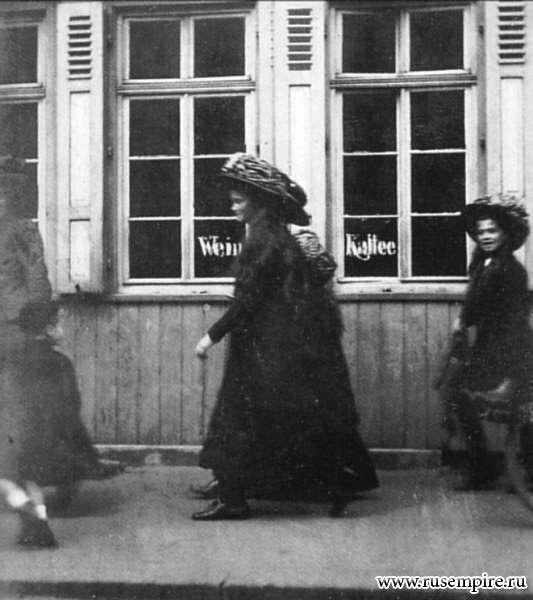
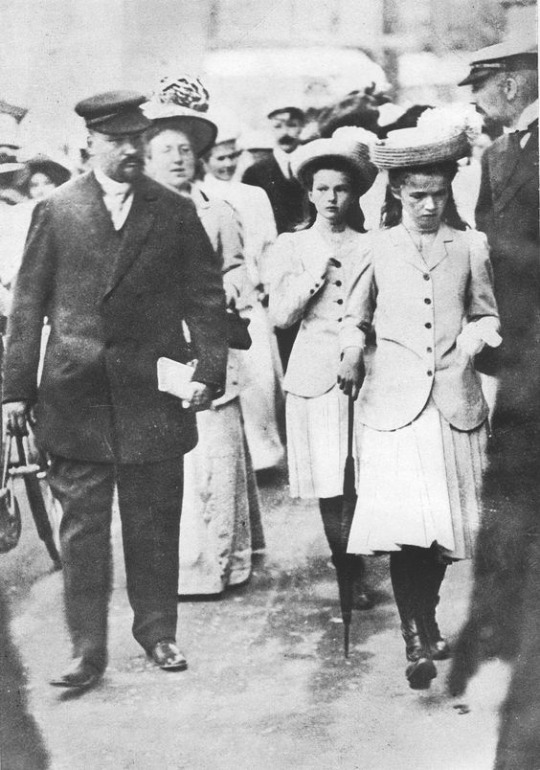
"Saturday. 10 August. … We walked along the historic boulevard and the main streets, but crowds followed us everywhere, so we were able to go into only 2 shops for a minute..." "Friday. 15 November. Had lessons, after that went shopping for wool with Nastenka as usual.." From Grand Duchess Olga Nikolaevna’s 1913 diary [my underlining]
In this entry, Olga describes shopping Countess Anastasia 'Nastenka' Vassilievna Hendrikova, who was a young lady-in-waiting at court and a particular favourite of the Grand Duchesses, often accompanying them on trips. As described in the first entry, it appears that safety and security concerns due to crowds, rather than a lack of understanding about shops, contributed to the Grand Duchesses not being able to shop frequently. Nastenka is frequently mentioned by the Grand Duchesses in their diaries, and volunteered to join the Romanov family in their house arrest and imprisonment. She was murdered by the Bolsheviks in September 1918.
"After coffee, I went for a walk with my pupils… They really liked to go to the shops and buy everything. Anastasia Nikolaevna was especially attracted to stores, where they sold doll shoes of various sizes… Tatiana Nikolaevna did not always accompany since the doctors found her heart was weak and she went with the Empress to take baths." A Few Years Before the Catastrophe by Sofia Ivanovna Tyutcheva.
Sofia Ivanovna Tyutcheva was a maid-of-honour to Tsarina Alexandra Feodorovna, and in 1907 was appointed as governess to the Grand Duchesses. The Grand Duchesses referred to her as "Savanna". She was dismissed in 1912 when she voiced concerns over Grigori Efimovich Rasputin. She wrote a short memoir in 1945, and passed away in 1957.
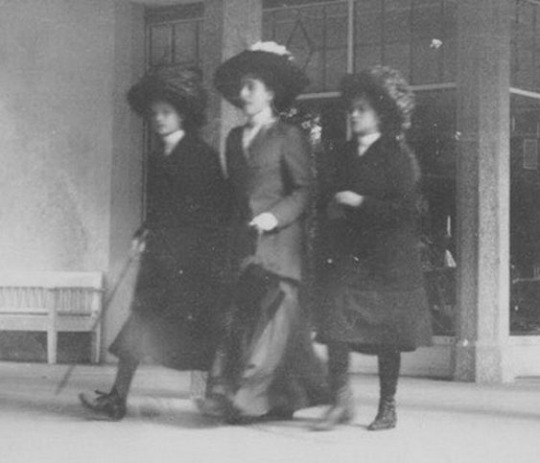
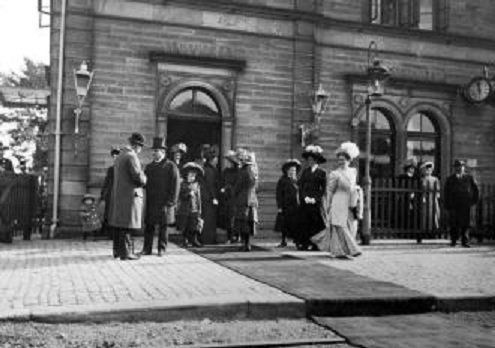
"[The] Grand Duchesses went shopping in the morning with one of the ladies-in-waiting to the Empress. They delighted in that because they could mix with the crowd and buy things just as everyone else did, and they were so pleased if they were not recognised at once." -- Upheaval - Olga Voronova [my underlining]
Countess Olga Konstantinovna Voronova was part of the aristocratic Kleinmichel family and in 1914, married one of the Romanov's favourite officers, Pavel Alexeievich Voronov. Through these connections, Olga Konstantinovna became a friend of the Grand Duchesses, exchanging frequent letters with Olga and Tatiana in particular, before and after the Revolution. She published her memoirs in 1932. Once again, it is inferred that being recognised and subsequent security concerns stifled the Grand Duchesses' shopping sprees.
Where did the myth come from?
It appears that the myth came about due to this extract from Margaretta Eagar, an Irish nanny who cared for the children from 1898 to 1904:
Her only knowledge of shops and shopping was derived from the toy and sweet shops in Darmstadt. One day she asked me why the Americans spoke English, not American. I told her the story of the Pilgrim Fathers, and described how they built houses and shops, and so made towns. She was exceedingly interested and inquired, ' Where did they find the toys to sell in the shops ? " Six Years at the Russian Court, by Margaretta Eagar
It appears that some historians forgot that Margaretta Eagar moved on from her nanny position in 1904, when the eldest Grand Duchess was nine and the youngest was three, and perhaps did not look for sources from when the Grand Duchesses had grown up and had slightly more independence.
Over time, the myth appears to have been exaggerated and repeated until it became part of the 'folklore' surrounding the Romanov Grand Duchesses, portraying them as isolated and naïve.
Whilst it is clear that the Grand Duchesses did enjoy going shopping in their lifetimes, safety and security concerns meant they could not enjoy shopping as frequently as other teenagers may have. In the same way royals today would not be able to go to shops without being recognised, there was a chance that a crowd could gather. Similarly, Olga and Tatiana appear to have shopped more than the younger pair, Maria and Anastasia, likely due to being older in age and therefore having more independence.
Photos:
First set, left: Olga, Anastasia (hidden behind Olga), and Maria Shopping in Germany, 1910. Right: Olga and Tatiana out shopping in the Isle of Wight, 1909, accompanied by Dr. Evgeny Botkin (in the suit)
Second set, left: Tatiana and Maria shopping with Sofia Ivanovna Tyutcheva, circa 1910. Right: The Grand Duchesses and their entourage by shops, most likely taken in Germany, 1910
Sources:
Journal of a Russian Grand Duchess: Complete Annotated 1913 Diary of Olga Romanov, Eldest Daughter of the Last Tsar, translator Helen Azar, (Independently published: 2015)
A Few Years Before the Catastrophe: The Memoirs of Sofia Ivanovna Tyutcheva, translator George Hawkins, (Independently published: 2020)
Upheaval, Olga Voronova (Woronoff), (New York; London: G. P. Putnam's Sons, 1932) -- Free to read online here
Six Years at the Russian Court, Margaretta Eagar, (New York: Charles L. Bowman and Company, 1906) -- Free to read online here
#Romanov#Romanov family#otma#Olga Nikolaevna#Tatiana Nikolaevna#Maria Nikolaevna#Anastasia Nikolaevna#sources#myths#myth-busting#Romanov sisters#Margaret Eagar#Margaretta Eagar#Sofia Ivanovna Tyutcheva#Nastenka Hendrikova#diaries#free to read#Olga Romanov#Tatiana Romanov#Maria Romanov#Anastasia Romanov
142 notes
·
View notes
Text
My God-King Nico AU
Note: AU timeline consists of post-TSATS and the following 2 decades.
Biographical Information
Birth: 1932, Venice, Italy
Age(s): 34 (biological), 104 (chronological)
Political Information
Occupation(s):
The Underworld (including Hades’ Palace, Judgment Pavilion, Elysium, Asphodel, Fields of Punishment, Tartarus, and Trog Headquarters), Mt. Olympus, Camp Half-Blood, Camp Jupiter, and realms of other pantheons (partial).
Title(s):
Niccoló di Angelo, Son of Hades, Hound of Hades, Ambassador of Pluto, Champion of Nyx, The Ghost King, God-King of the Underworld, Lord of Darkness, Shadow-weaver, Midnight Star, Unifier, and Ice-stepper*
*when he is intimidating (or in a bad mood), his cold and calculating steps freeze the ground/water beneath, gaining him this title by his enemies.
Personal Information
Family:
Hades (father, missing, presumed retired)
Persephone (stepmother)
Maria di Angelo (mother, deceased)
Bianca di Angelo (sister, deceased)
Hazel Levesque (paternal half-sister)
Cocoa Puffs (10 cacodemon children)
Nyx(?)
Lover(s):
William Andrew Solace (ex-boyfriend, deceased)
Dakota (boyfriend, deceased)
Phoebus Apollo (political consort, current lover)
Summary (from previous post):
"After Hades' sudden retirement, the god steps down to have his willing heir inherit the Greek Underworld’s throne. Now, Niccoló di Angelo has to don his father's crown and take the dark mantle upon himself. He has become a god and a king of the underworld. The new lord believes he won't be capable of handling everything the realm needs -and with Hades’ seeming disappearance- Persephone, Thanatos, and even the Erinyes will be there to guide him along the steps of chthonic royalty and responsibility. Royal coronation, arranged marriage, chthonic affairs, and meetings with gods from other pantheons await the young lord. However, some chthonic deities have their vengeful eyes looming over the lost little angel."
43 notes
·
View notes
Text
assorted pjo/hoo headcanons pt 2
part 1 - part 2
A popular one, but Percy grew up speaking Spanish with Sally. Once Gabe came into the picture it became something shameful and something to be hidden. In the same vein as him never talking about Gabe, he never gives any indication that he knows any Spanish, not even when people speak it around him
Annabeth and Percy 'adopt' Will. Annabeth the winter session following TLT, Percy and Annabeth together following the Battle of Manhattan. They don't properly parent him or anything, but they check in on him and help him come to terms with being Head Counsellor. At first Will thinks they do it only because he saved Annabeth's life, but no, they really just care about him that much
Something I will elaborate on in a different post: both Jason and Nico have DID (dissociative identity disorder), presenting in very different ways. Nico's alters are all him at varying ages, except for one introject of Bianca and one of Percy (that never fully front, they work internally or influence passively). It could very easily be confused for just very severe mood changes and PTSD. He's not really aware of it and considers himself to just be moody. Jason has a more 'typical' presentation in that the different alters have different names, genders, ages, roles. He becomes aware of it around the time of the Battle of the West Front/Mt Tam, and again learns about it following TLH. It is the only way to cope, caused by both of them being exposed to continuous and repeated trauma at a young age. Nico is aware that Jason has a thing, while Percy knows something is up with Nico. They both just lack the terminology to explain it well. This is one of the reasons why Nico and Jason quickly get along at Camp Jupiter before the kidnapping and then again following the encounter with Cupid
After starting to recover from dissolving into darkness, Nico slowly starts going back to school. He's too busy, too ill and too behind to go full-time, so instead he goes two days a week for core subjects at Goode. To do this he spends two nights a week at Sally and Paul's place. It helps give him some of the normalcy he so desperately needs. The rest of the week he spends at CHB doing various things (teach classes, infirmary work, head counsellor duties, therapy). Will goes to a different school in NYC during the week but they make plans for him to transfer after Christmas break
Will doesn't like crying because it literally hurts him. Whenever he cries it's like his eyes are on fire so instead of trying to figure out why that is, he will do anything in his power to not cry at all
Healing and medicine are two separate traits for Apollo kids to inherit. Lee could heal, but Michael was the one with the field medic skills and thus the one to mostly train Will. When Lee died, the infirmary went to Will because divine healing is prioritised above mortal medicine. Will's not special because he can heal, he's special because he can heal and has an innate talent for medicine. Combine that with the photo- and nosokinesis and he's technically inherited four separate skills, whereas most Apollo kids would only get two (basic good aim/vitals reading/minor powers of prophecy does not count, those are universal). He really is all of Apollo's best and none of his worst
In the Last Olympian it's mentioned that Hades met Maria di Angelo in Washington D.C, but in House of Hades that Nico and Bianca grew up in Venice. Headcanon that Bianca was born in Washington D.C in 1930 but shortly after being born Maria di Angelo moved back to Venice in hopes of escaping the worst of the Great Depression. This didn't work (the Great Depression hit Italy in 1931 and peaked in 1932), but by the time it got bad it was harder than ever to leave fascist Italy, especially through official channels - which they would have to do considering Nico's nonno was an Italian diplomat and fleeing would put him in danger. Nico was born in Venice and in 1939, less than a year after visiting Diocletian's Palace they were cleared to reunite with his grandparents in the States, avoiding the outbreak of WWII.
The reason why the conversation with Venus horrified her so much wasn't because she was upset about not being destined to be with Jason, it was because she interpreted 'no demigod shall heal your broken heart' as having to date someone fitting the criteria (not a demigod, powerful because she has power) and the only person she can think of is Octavian. She absolutely thought Venus told her she was doomed to date Octavian
Percy who is the demigod most similar to Jason in terms of wolf traits developed because they had the same amount of 'established identity' when arriving at the wolf house (young age vs amnesia). Percy who learns to be entirely certain of initiating physical affection without fear after being at the wolf house because he learns that even dangerous beings can be gentle. Percy who is scared of initiating physical contact because he saw how Gabe was and how demigods used to react to him knowing he was a son of the Big Three
#pjo#pjo hoo toa#percy jackson#annabeth chase#will solace#jason grace#nico di angelo#reyna avila ramirez arellano#pjo tag#these are messy and were collected over a few weeks
47 notes
·
View notes
Text
paintings round 3 poll 32


tap to view full images
Rafts by Edmund Bartłomiejczyk , 1932
propaganda: The style remainds me of japanese woodcuts.
Fighting the dragon (from Tristan and Iseut) by Maria Hiszpańska-Neumann, 1961:
[no propaganda has been submitted]
24 notes
·
View notes
Text
“Per noi non vi sono stranieri. Noi vogliamo che tutti gli uomini, qualunque sia il loro luogo di nascita, qualunque sia il ceppo etnico da cui derivano, qualunque la lingua che parlano, si considerino come fratelli e si aggruppino liberamente e cooperino insieme per il maggiore benessere, la maggiore libertà, la maggiore civiltà di tutti. Se di stranieri vuol parlarsi, allora per noi lo straniero non è colui che è nato al di là di una frontiera e parla una lingua diversa, o ha la pelle di diverso colore; lo straniero, il nemico, è l’oppressore, è lo sfruttatore, è chiunque, in qualunque paese, sottomette a sé un altr’uomo.”
Errico Malatesta (4 dicembre 1853, Santa Maria Capua Vetere – 22 luglio 1932, Roma)
aitanblog.wordpress.com/2024/05/15/sullimmigrazione-continuiamo-a-dare-i-numeri
“Se voi avete il diritto di dividere il mondo in italiani e stranieri allora io reclamo il diritto di dividere il mondo in diseredati e oppressi da un lato, privilegiati e oppressori dall’altro. Gli uni sono la mia patria, gli altri i miei stranieri.”
Don Lorenzo Milani (Firenze, 27 maggio 1923 – Firenze, 26 giugno 1967)
#immigrati#immigrazione#migranti#stranieri#errico malatesta#Malatesta#don milani#don lorenzo milani#oppressi#oppressori#anarchia#solidarietà
54 notes
·
View notes
Text
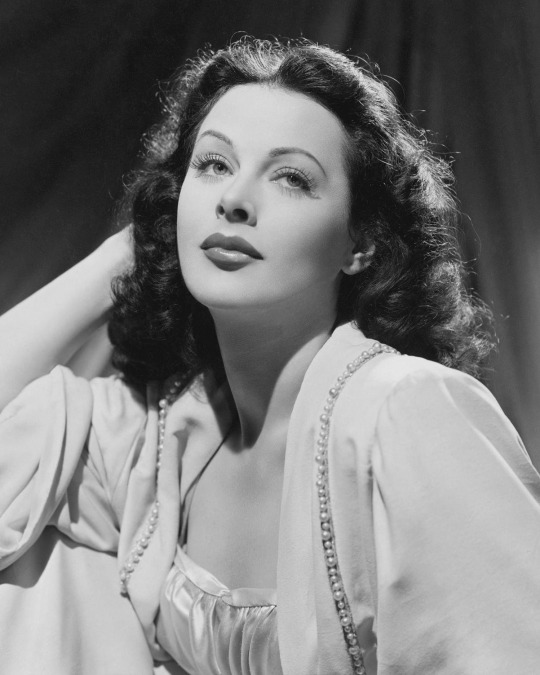



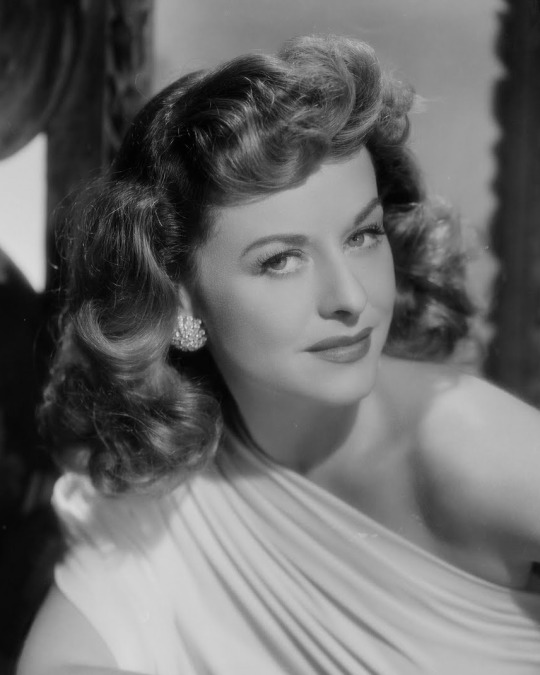
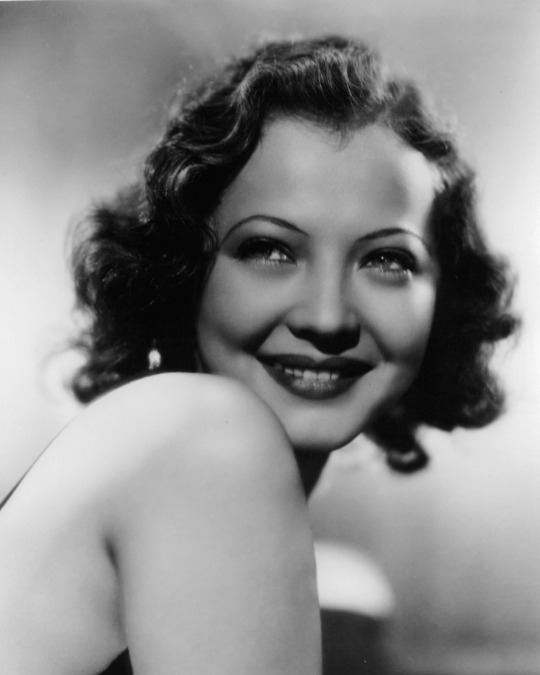
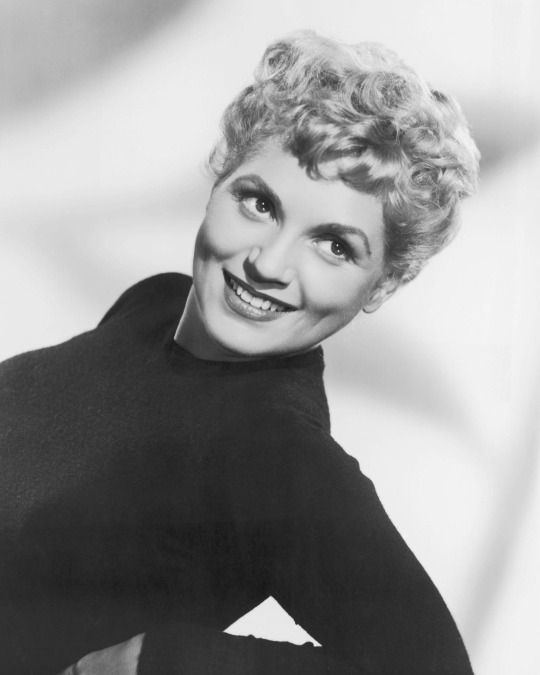
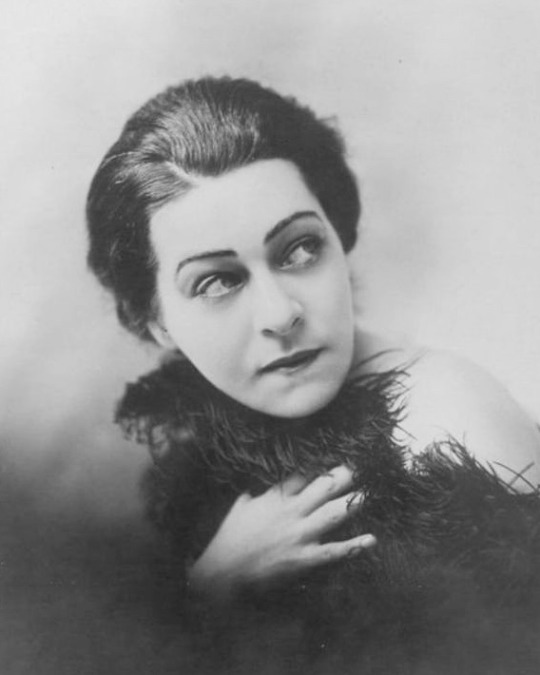

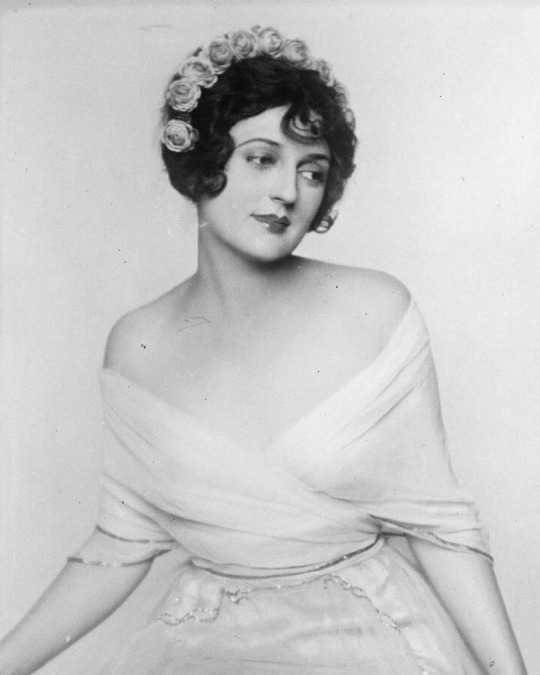
Jewish Old Hollywood actresses
✡︎ Hedy Lamarr (born Hedwig Eva Maria Kiesler; November 9, 1914 – January 19, 2000)
✡︎ Lauren Bacall (born Betty Joan Perske; September 16, 1924 – August 12, 2014)
✡︎ Shelley Winters (born Shirley Schrift; August 18, 1920 – January 14, 2006)
✡︎ Theda Bara (born Theodosia Burr Goodman; July 29, 1885 – April 7, 1955)
✡︎ Paulette Goddard (born Marion Levy; June 3, 1910 – April 23, 1990)
✡︎ Sylvia Sidney (born Sophia Kosow; August 8, 1910 – July 1, 1999)
✡︎ Judy Holliday (born Judith Tuvim; June 21, 1921 – June 7, 1965. She took her stage name from "yom tovim," which is Hebrew for "holidays.")
✡︎ Alla Nazimova (born Marem-Ides Leventon; June 3 [O.S. May 22], 1879 – July 13, 1945)
✡︎ Piper Laurie (born Rosetta Jacobs; January 22, 1932 – October 14, 2023)
✡︎ Carmel Myers (April 9, 1899 – November 9, 1980)
#hedy lamarr#lauren bacall#shelley winters#theda bara#paulette goddard#sylvia sidney#judy holliday#alla nazimova#piper laurie#carmel myers#old hollywood#mine#1910s#1920s#1930s#1940s#1950s#jewish
311 notes
·
View notes
Text



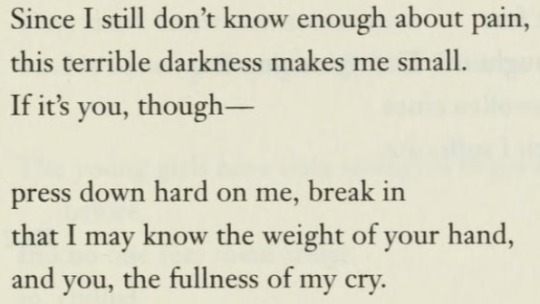


small loves
frank o'hara, "steps" | thomas campion, "follow your saint" | weegee "[lovers on a park bench]" (c. 1940s) | rainer maria rilke, "the book of poverty and death III.1" | brassaï, "couple d'amoureux dans un petit café, quartier italie" (c. 1932) | margaret atwood, "variation on the word sleep"
#web weaving#words#on love#frank o'hara#thomas campion#weegee#rainer maria rilke#brassai#margaret atwood#poetry#photography#art#my stuff
178 notes
·
View notes
Text



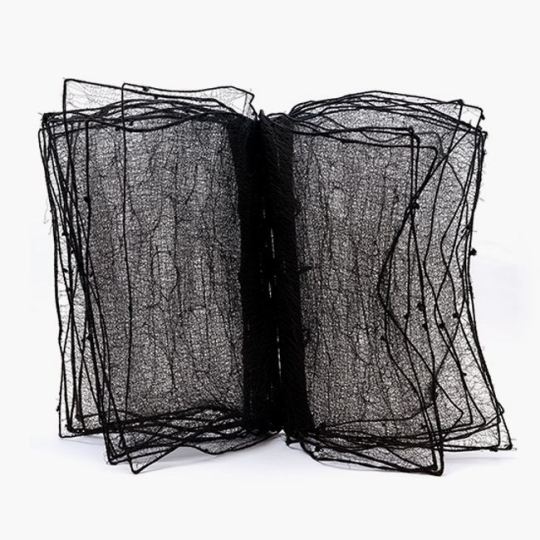
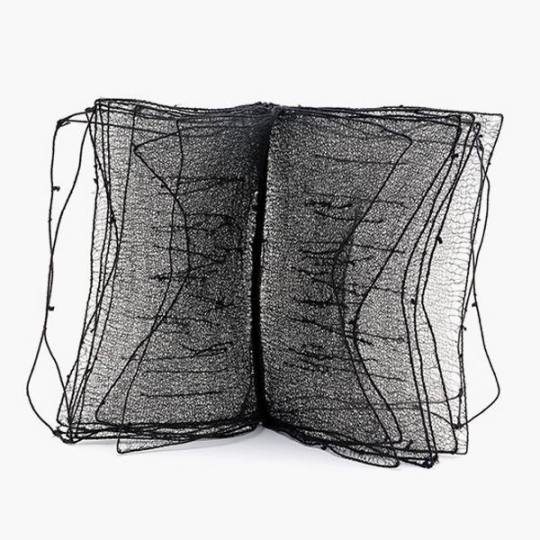
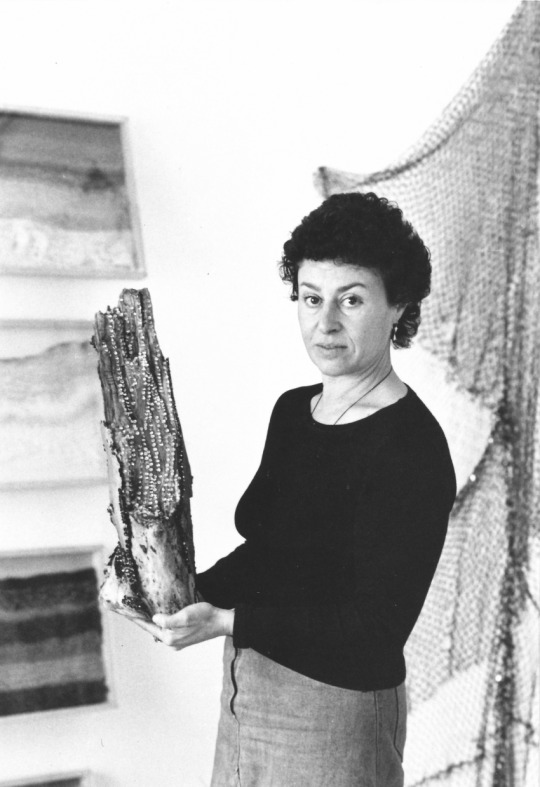
Franca Sonnino, Italian, b 1932.
A slightly awkwardly gallery-translated text: "Born on February 13, 1932 from a family of Jewish origins, Franca Coen, married Sonnino, grew up and still lives in Rome. After graduating in Literature, she devoted herself with love to her family, her artist’s hands weave the first threads to create sweaters and scarves for her children, home furnishings, and blankets for their nest.
It is the early 1970s, Franca’s children are still small, and on the floor below their apartment, located in the Balduina area, lives a small and lively Sardinian woman: the artist Maria Lai. A mutual fascination immediately arises between the two women, the world that Maria Lai brings with her captures the attention of the young housewife. From time to time she brings her the fabrics for her works (Franca’s husband works in the textile sector), but sometimes she brings her the dinner that Maria, immersed in her work, forgets to prepare. These were years of intense work for Maria Lai, who saw numerous students and young artists enter and leave her house-atelier, willing to learn her art. But what strikes Maria in the density of people that surrounds her is precisely that discreet neighbor with lively and curious eyes, and above all with very skilled hands. In their time together, which they both seek more and more often, the two women cultivate their bond through long discussions and readings. Franca observes Maria’s work and creation, while the latter urges her with one of her most emblematic phrases: “use your hands to create useless things, do not make useful objects anymore”. Read more https://www.repettogallery.com/artist/franca-sonnino/
"Thread, Sign, Space" curated by Simona Campus, Paolo Cortese.
Exhibition 15.10.2022-12.01.2023.
https://www.grammaepsilon.com/artists/franca-coen-sonnino...
95 notes
·
View notes